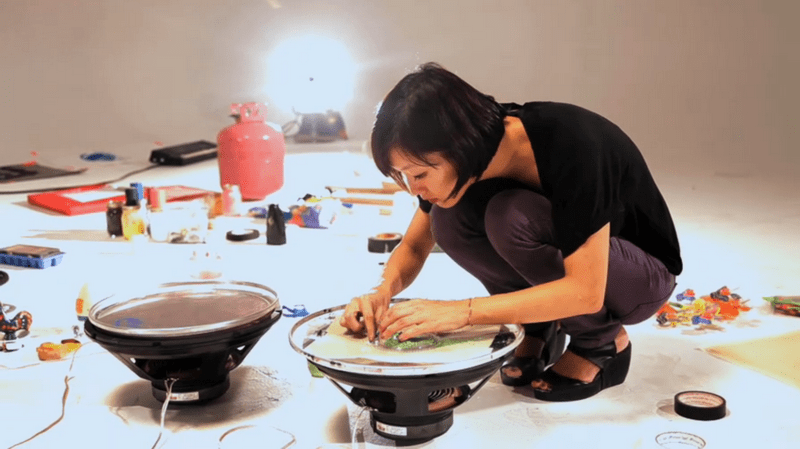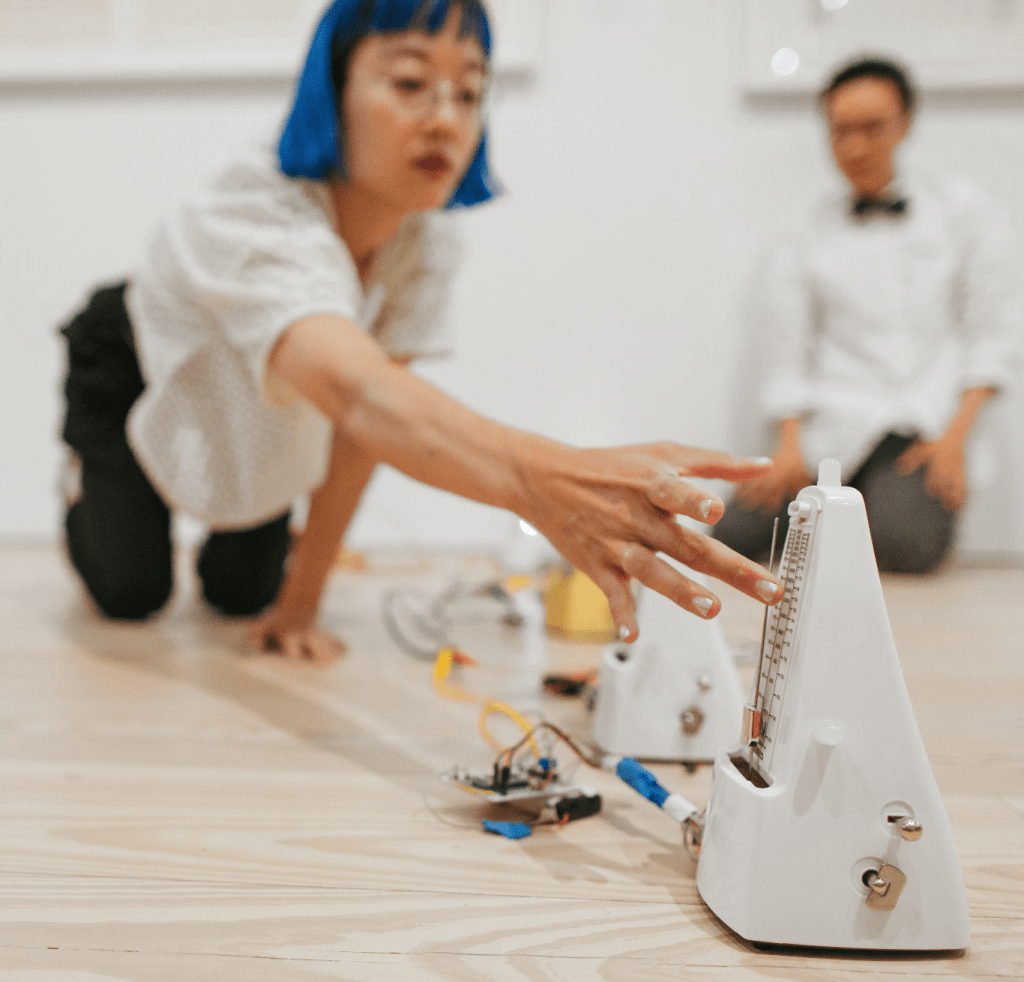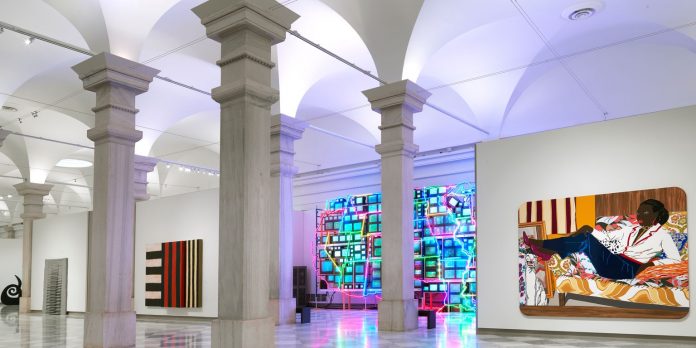Stephanie Stebich, director of Margaret and Terry Stent, welcomes visitors back to the Smithsonian American Art Museum. In her address, she announced that the Smithsonian Museum of American Art and Renwick Gallery has reopened to the public. Now that the museum is open to the public again, the strictest health guidelines will have to be followed to ensure that everyone not only has an unforgettable experience but also be safe.
First Sound Installations

A year after she appeared at the Whitney Biennale, two works by artist Christine Sun Kim joined the collection of the Smithsonian Museum of American Art in Washington, DC, marking the institution’s first acquisition of a sound installation.
It was announced on the Instagram gallery of François Gebali from Los Angeles, which represents Kim. Kim’s acquisitions of A Week of Lullabies for Ru (2018) and Close Readings (2015) will debut at an exhibition of art and musical thinking, scheduled for 2022.
Together, these pieces provide a great introduction to Kim’s complex multimedia practice and her insightful exploration of the social life of sound, ”said Saisha Grayson, media curator at SAAM. “Kim’s purposeful, playful, personal intervention encourages all of us to draw new attention and care to our individual and collective relationships, as well as to the way we communicate and interact with each other.

SAAM is deliberately diversifying its collection of time-bound media, and Kim’s installations are joining other recent video art acquisitions by Chitroy Ganesh, Simon Lee, Liz Magic Lazer, and Kaulin Smith, who explore the intersecting issues of women’s equality, racial justice, and the rights of people with disabilities.
The SAAM temporary media collection also houses a significant archive of the work of aspiring video artist Nam June Paik. “Lullabies are a continuation of a tradition well represented in our Paik foundations, artists whose interest in sound is evidenced by written scores, performances and creative reuse of technology, audio, and video,” Grayson said.
For Roo’s Lullaby Week, Kim invited seven friends to create sound files or sound diets, to calm the artist’s daughter. The basis of the lullabies is a conceptual score. It dictated that songs should not contain words or speech and that the emphasis should be on lower frequencies.
Participants had no time limits, and the length of the finished files ranged from one minute 30 seconds to 11 minutes. The installation consists of seven channels.

In Closer Reading, Kim asked how people who are deaf or hard of hearing perceive a movie through subtitling — specifically what sounds they prefer to skip or dub.
Kim has put together a selection of video clips in which sound played an important role and asked four deaf and hard of hearing employees add captions to existing subtitles.
The new videos play on four synchronized flat screens with subtitles ranging from conceptual to critical and humorous (a scene from 2001 Stanley Kubrick’s A Space Odyssey is labeled “overly pretentious piano music that evokes absolutely nothing”).
Kim said that the fact that her work is part of the collection of the Smithsonian Museum of American Art gives the impression that they are recognized as part of American history, especially as their first quality acquisition.
Deaf Artist Creates Work That Everyone Can Hear

Christine Sun Kim is a deaf artist who pushes the boundaries of the art world with sound. She turned her attention to this environment that was once inaccessible to her after stumbling upon a gallery devoid of objects and simply filled with sounds. Realizing this feeling that she was lacking, Kristin Sang Kim gave up “sound etiquette” and regained her ownership, as written on her website. Kristin Sang Kim accomplishes this by making sounds without looking at people.
She writes about the past. Whenever she makes a sound, she would become very concerned with people surrounding her because their reactions inform of the existence of sound.
How was this collection formed?
In 1829, a resident of Washington, John Warden, organized a museum of European art in his own house. Subsequently, his personal collection migrated to the Smithsonian Institution, and Warden became a patron and curator of the first exhibition.
In 1906, a turning point in the history of the museum occurred. Then an art collector Harriet Lane Johnson and the niece of US President James Buchanan persuaded a federal court to rule on the creation of a National Gallery of Art based on the Smithsonian collection.
Its opening took place during the country’s collectible boom, and it provided many major donations, such as highly prized European and Asian art donated by John Gellatly, American Impressionist paintings, and Barbizon School landscapes by William T. Evans.
In the museum hall
The main building of the museum is recognized as a National Historic Landmark. It is considered one of the finest examples of the Greek Revival in the United States.
The facade of the building is opened by the Ionic colonnade, which is based on the proportions of the famous Parthenon temple in Athens. The original building project, designed to link the harmony and beauty of the classical era with the practicality of modernity, was developed by the talented architects Robert Mills (1781-1855) and Thomas W. Walter (1804-1887).
The Smithsonian museum changed its official name several times until, in 1980, the following was fixed – the National Museum of American Art. Since then, the organization has focused on promoting artists working exclusively in the United States.
But discussions about the legitimacy of the name did not stop, and in 2000 there was a final renaming, reflecting the origin of the collection, as the Smithsonian Museum of American Art.
Its branch, dedicated to the history of arts and crafts and crafts, Renwick Gallery, is located a few steps from the White House. In our time, the museum has adopted a scientific and educational program, since 1951, it has been organizing traveling exhibitions in the country, they were visited by 2.5 million people.
The Smithsonian Museum has become a leader in cutting-edge educational practices with online conferences, workshops, and lectures. The unique electronic database (over 500,000 records) contains invaluable materials, giving scholars and art historians the opportunity to engage in a variety of research.

























